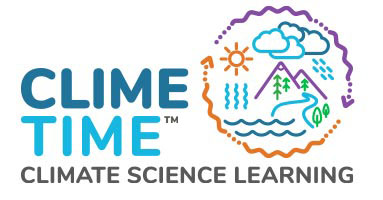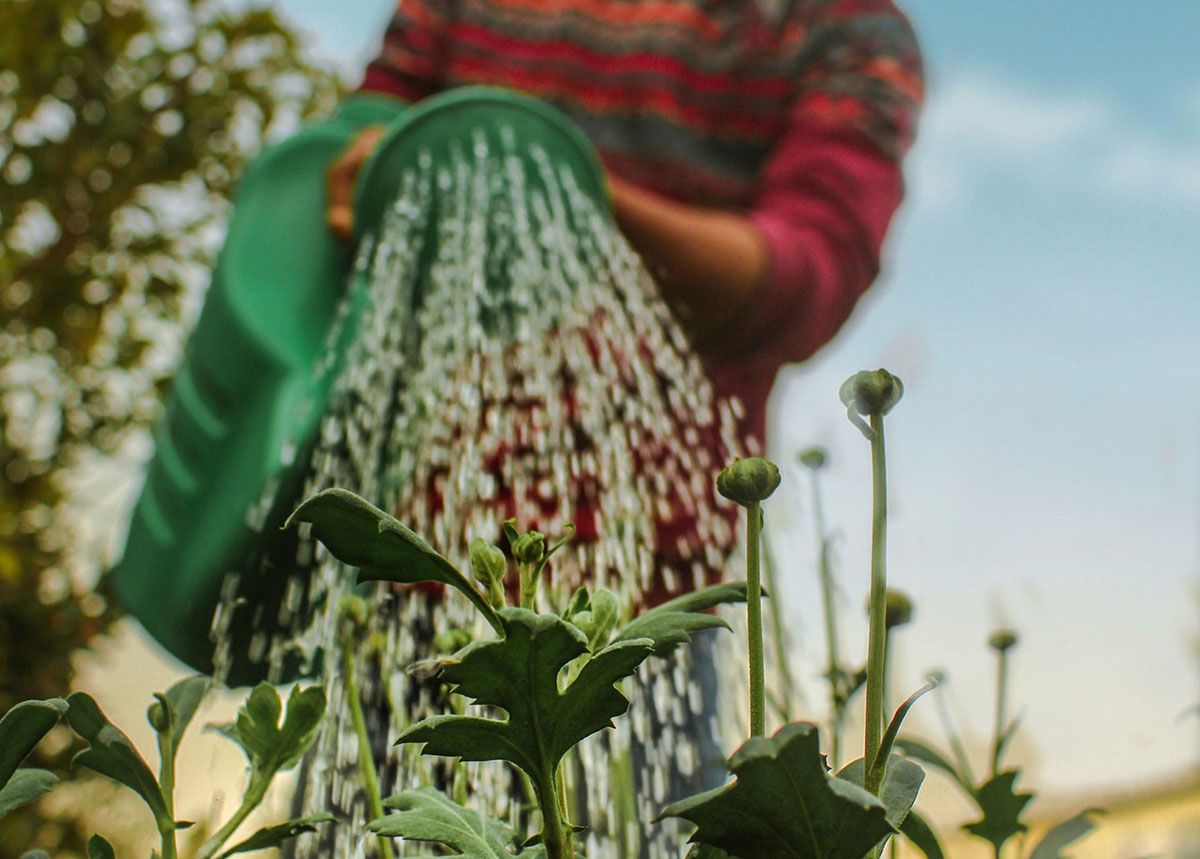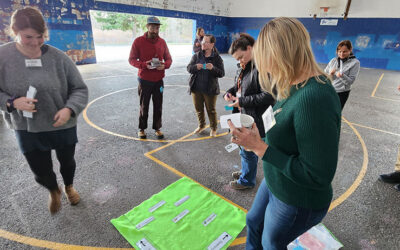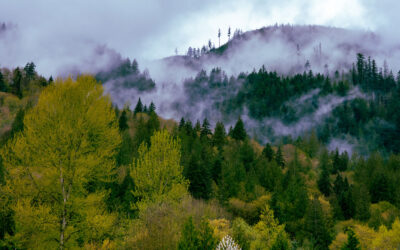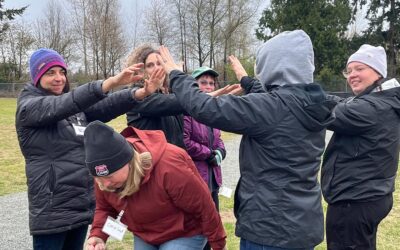What’s your favorite meal? Is it macaroni and cheese or pizza? Arroz con pollo or oatmeal? No matter what the food, where it is grown, or how it is disposed of, there is an impact on the environment and people. These facts were made evident to elementary school teachers from Whatcom County who were asked to pick a common favorite meal of their students and track the energy that it took to create the ingredients that go into that meal. After adding and revising their models and adding where labor, water, and fossil fuels were used. Teachers shared their impressions and learning.
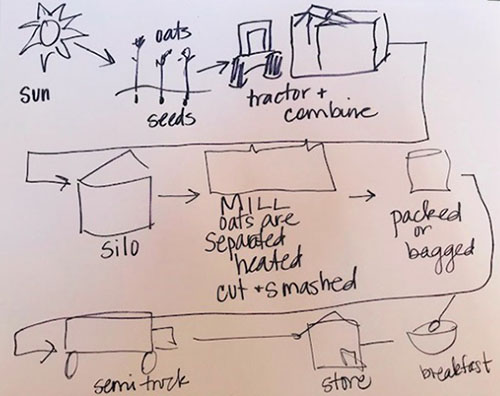
Energy of Oats to Plate
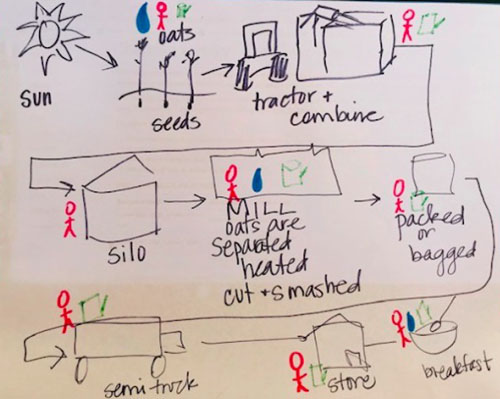
Revised Model of Oats to Plate
“One pattern I noticed immediately was the use of labor, water, and fuel in each step of almost every model. Although I felt, at first, like my model showed lots of steps to get the food to the table, I realized that I wasn’t thinking of the energy needed beyond the obvious. For instance, with the harvesting step, I thought of fossil fuel for the tractor, but not the labor. I also think I should have added water to every step since nothing is done without water! Revising our initial models was a great way to break down and think about all the energy and work that goes into the food that we eat! I hope that students think about this when they are about to throw a whole apple in the garbage! Powerful activity to do with students!” – 5th-grade teacher, Bellingham, WA
Teachers also made connections to equity issues; “I drew my people with smiling faces but I must admit I thought about the summer between my junior and senior years of high school. I was not necessarily smiling while performing agricultural work. I thought I would make a fortune picking watermelons (in Bakersfield) because many of my classmates bragged about how much money they made doing it. Oh my goodness. It’s back-breaking work. You start before daybreak and by 10 am it’s deathly hot. I only lasted 2 weeks and decided to quit after fainting from “mild heat stroke”. I did make more money than other jobs I was qualified for but what a price to pay to earn money. I can’t eat watermelon without thinking about the person who picked it, put it in the wheelbarrow, and pushed it to the loading dock.“ – K-8 teacher, Bellingham, WA
“A meal as simple as spaghetti and meatballs requires a shocking amount of energy! It didn’t occur to me all of the steps necessary for such a meal. It is also so interesting to see the water needed per meal item. It is an often overlooked resource when it comes to boiling water for dinner. I hope to be more mindful of my food choices and the impact on the environment.” – 3rd-grade teacher, Bellingham, WA
When comparing resources used to dispose of food waste: “This [exercise for comparing] was interesting! It certainly drove home the idea that composting is an amazing service we have in our area, but it still uses so much energy! I need to focus more on reducing food waste in general.” – 5th-grade teacher, Bellingham, WA
It was evident that both the teachers who taught the unit and their students met learning goals through this story that a 5th-grade teacher shared via email:
The mayor paid a visit to the class to teach the students about government. During the question and answer session, one student asked if the city could make curbside composting free and available for all people. The teacher shared, “My students were very upset that it costs money to compost and that some people couldn’t afford it.”
This student grasped the concept that it’s going to take everyone doing their part to reduce the human impact on our environment. They also understood how some systems aren’t equitable and we all need to do our part to change it. And lastly, the student knew that learning about the problems is just the first step – taking action is where we make real change.
